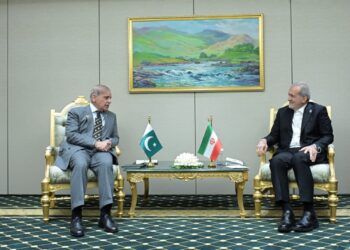Trump’s tariffs target Asia & Africa, with rates over 40%. Experts say China is the real target. Discover the economic and trade impact.
Trump Tariffs:
On April 3, 2025, President Donald Trump unveiled a new set of tariffs, marking a significant change in U.S. trade policy. Many developing countries in Africa and Southeast Asia are significantly impacted by these tariffs. High tariff rates, some above 40%, are a problem for nations like Vietnam, Laos, Myanmar, and Cambodia. Trump asserts that these tariffs will stop unfair trade practices and safeguard American industry.
Experts, however, think China is the true goal. To evade direct U.S. tariffs, Chinese manufacturers have shifted their operations to Southeast Asian nations over time. The United States seeks to counter China’s hegemony in international trade by levying heavy tariffs on these countries. However, these additional tariffs are not only hurting China; they are also seriously harming developing nations whose economies rely on exports to the United States.
Impact on Southeast Asian Countries:
Several Southeast Asian countries are among the hardest hit by Trump’s new tariffs. These nations have growing economies that depend heavily on exports to the U.S. The new tariffs threaten jobs, investment, and overall economic stability.
Cambodia:
With a 49% tariff, Cambodia has one of the highest rates. With almost 90% of its clothing manufacturers controlled by Chinese investors, the nation’s economy is mostly dependent on the apparel sector. These factories manufacture footwear and clothing for well-known American brands. Many enterprises may be forced to close or relocate due to the high tariffs, which would result in job losses and unstable economic conditions.
Vietnam:
In recent years, Vietnam has emerged as a significant hub for manufacturing. To get around earlier U.S. tariffs, many businesses shifted their production from China to Vietnam. However, Vietnam’s advantage is eroding with the new tariff rate of 46%. Now, companies might reconsider making investments in the nation. Businesses moving their manufacturing once more could hinder Vietnam’s economic expansion and cut down on job possibilities.
Myanmar and Laos: Economies Face More Challenges
Myanmar and Laos already have weak economies. Myanmar is dealing with the effects of an earthquake and ongoing civil war, while Laos has high poverty rates. The new tariffs, which exceed 40% for both countries, will further strain their fragile economies. Many businesses in these nations rely on exports to survive, and these tariffs could push them into deeper financial trouble.
How African Nations Are Affected:
Trump’s tariffs are not only impacting Southeast Asia. Several African nations are also facing high tariff rates, which could worsen poverty and economic struggles.
Lesotho:
Lesotho, a small country in Africa, has the highest tariff rate at 50%. The nation already faces serious health and economic challenges, including one of the highest HIV infection rates in the world. With these tariffs, exporting goods to the U.S. will become more expensive, making it harder for businesses in Lesotho to survive.
Madagascar and Botswana:
Madagascar and Botswana have also been hit with high tariffs, 47% and 37%, respectively. These countries depend on exports to support their economies. With higher costs to sell goods in the U.S., businesses may struggle to stay profitable. This could lead to job losses and economic instability.
Why Is Trump Targeting These Countries?
Although Trump claims the tariffs are meant to protect American industries, experts believe they are mainly designed to target China. In recent years, many Chinese companies have moved their production to countries like Cambodia, Laos, and Vietnam to avoid direct U.S. tariffs.
By imposing high tariffs on these countries, the U.S. is making it harder for Chinese businesses to operate there. However, this strategy also harms local businesses and workers in these nations, as they depend on exports to the U.S. for economic growth.
Wider Effects on Global Trade:
The introduction of these tariffs is expected to cause major disruptions in global trade. Some of the biggest consequences include:
Supply Chain Disruptions:
Global supply chains are essential to many industries, such as electronics and fashion. To cut expenses, businesses manufacture their products in several nations. Businesses will have to increase prices or find new suppliers as a result of the increased tariffs, which will increase production costs. Delays and product shortages may result from this.
Higher Prices and Inflation:
Tariffs will affect American consumers and businesses by raising the price of imported goods. The cost of commonplace goods like apparel, electronics, and home furnishings may increase. Inflation could result from this, making it more difficult for individuals to pay for essentials.
Strained Diplomatic Relations:
The tariffs are not only affecting America’s rivals but also its allies. Many of the countries facing high tariffs have friendly trade relations with the U.S. These new policies may push them to seek stronger economic ties with other global powers, especially China. If this happens, it could weaken America’s influence in global trade.
Will These Tariffs Help or Hurt the U.S.?
Trump argues that these tariffs will protect American jobs and industries. However, many economists disagree. They warn that the tariffs could:
- Increase costs for American businesses, making it harder for them to compete globally.
- Reduce trade opportunities, as other countries may impose their tariffs in response.
- Slow economic growth, as higher prices reduce consumer spending.
While the goal is to bring manufacturing back to the U.S., many companies may simply move to other low-cost countries that are not affected by these tariffs. This means that, in the long run, the policy may not have the desired effect.
Conclusion:
With significant ramifications for numerous developing countries, Trump’s new tariffs represent a significant shift in U.S. trade policy. Experts believe China is the true objective of these tariffs, despite the ostensible justification of protecting American industries. Among the most severely affected are nations in Africa and Southeast Asia. The high tariffs would probably cause economic difficulties for countries like Madagascar, Botswana, Laos, Vietnam, Myanmar, Cambodia, and Lesotho.
In addition, the tariffs have the potential to strain diplomatic ties, increase consumer costs, and interfere with global supply chains. The long-term effects of these measures are still unknown, despite the United States’ aspirations to achieve economic independence.

























